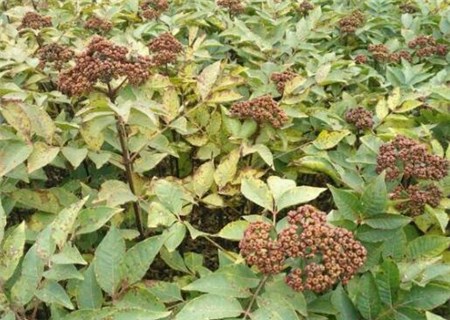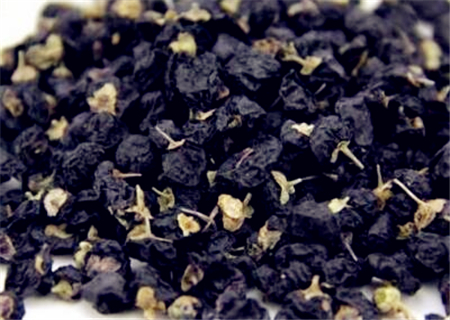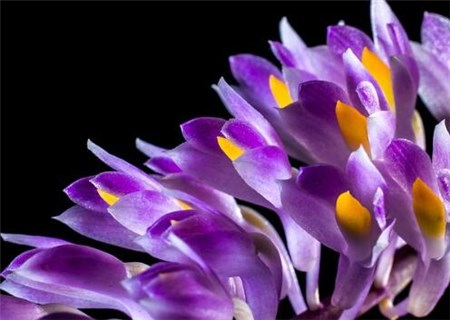What are the planting methods of Evodia rutaecarpa? What is the difference between Cornus officinalis and dogwood? How can poisoning be saved?
Evodia rutaecarpa belongs to Rutaceae, and the nearly mature fruits of Evodia rutaecarpa and its varieties are commonly used in traditional Chinese medicine. There is a long history of planting in China. So do you know the planting methods of Evodia rutaecarpa? What is the difference between Cornus officinalis and dogwood? How can poisoning be saved?

I. planting method of Evodia rutaecarpa
1. Methods of reproduction:
① split-root propagation: select the exuberant old tree as the breeding mother plant, before and after the Beginning of Spring, dig out several roots next to the old tree (dig far away from the main root, lateral roots should not be dug too much), cut into several segments with a knife, each section of 13~17cm is long, to raise seedlings. The seedbed 100~120cm is wide, and every 17~20cm is square. Insert a section of cut root into the soil, and only expose 1.5cm on the outside. Then apply a small amount of thin human feces, cover with soil or stable manure, and water to keep the soil moist. It can sprout in 30 to 40 days. It can be transplanted in the spring of the second year.
② tillering reproduction: Evodia has strong tillering ability, in October to November, where it leaves the mother plant about 70cm, dig the topsoil, cut once or twice in the lateral root every 7~10cm with a knife, after cutting the epidermis, still cover the shallow soil 3~6cm, and in the roots around the trunk, pour some thin human feces and urine, and then cover with garbage or straw to keep the soil moist. In the spring of the second year, buds can be produced where the injured part is cut; at this time, the mulch should be removed, and the roots connected to the mother plant can be cut off and transplanted around the Qingming Festival. Another way is to dig up the sprouts (seedlings) around the old trees in February and transplant them.
③ cuttings propagation: at the beginning of spring, before the new shoots grow, the spring shoots that grew strong and sunny last year were cut from the mother plant, and a few buds must be left, and the 34cm should be cut around. With the square distance of 35~50cm, 213 branches were inserted into the soil. When transplanting seedlings must choose sunny days, and must choose sunny, loose soil, fertile, well-drained ground planting. After planting, pay attention to shading, watering and drought prevention. After arriving at Grain Rain, the shoots of the aboveground part can pull out new branches, and a large number of new roots can be drawn out about 3 months after planting, and can be planted in the spring of the second year.
2. Transplanting: choose sandy loam with organic matter and ground with good drainage. It is suitable for planting in spring and autumn. When transplanting, first dig a good nest, nest width 50~70cm, deep 34~50cm, row spacing 330~400cm, triangle or square and other legal planting. When digging the nest, the topsoil and core soil are stacked respectively, and then the rotten barnyard manure or pond mud is used as base fertilizer; first, the topsoil is put to prevent the base fertilizer from getting hot and affect the plant growth; then the seedlings are put on the fine soil, and then the topsoil is covered with the core soil, and then the seedlings are gently lifted up and suppressed, so that the roots are tightly knotted with soil. It will blossom and bear fruit 2-3 years after planting.
What is the difference between Evodia rutaecarpa and Cornus officinalis
1. Different species and genera
Cornus officinalis is a deciduous shrub or small tree of Cornaceae, alias Cornus meat, medicinal jujube, jujube peel, Shu sour jujube, meat jujube, potato jujube, chicken foot, solid jujube, cornus meat, medicinal jujube, Tianmu seed, potato meat, solid jujube.
Evodia rutaecarpa is a small tree or shrub plant of Rutaceae, alias Evodia rutaecarpa, tea spicy, lacquer spicy seed, smelly spicy tree, Zuo Li Chunyou son, rice spicy seed and so on.
2. Different forms
In terms of shape, the biggest difference between Cornus officinalis and Evodia rutaecarpa is the fruit and flowers.
The drupe of Cornus officinalis is long oval, 1.2-1.7 cm long, 5-7 mm in diameter and red or fuchsia in color. The fruit is full and looks like a red jujube, bright and shiny. The fruit period of Cornus officinalis is from September to October.
The fruit of Evodia rutaecarpa is dense or alienated, the color is dark purplish red, there are large oil spots, each petal has 1 seed, the seed is nearly spherical, one end is blunt, the ventral surface is slightly flat, brown-black, shiny. What kind of fruit is like a small tumor, the surface is not smooth nor gorgeous, looks more dense. Its fruiting period is from October to November.
The flowers of Cornus officinalis are yellow, golden and dazzling, while those of Evodia rutaecarpa are white and light.
3. Different medicinal values.
Cornus officinalis is lukewarm, sour and astringent, with the effect of tonifying liver and kidney and astringent essence. For vertigo and tinnitus, waist and knee pain, impotent spermatorrhea, frequent enuresis, avalanche zone, sweat collapse and other symptoms.
Evodia rutaecarpa is hot, pungent and bitter, with the effect of relieving cold and relieving pain, reducing adverse events and stopping vomiting, helping yang and stopping diarrhea. Treatment of cold hernia abdominal pain, cold wet beriberi, menstrual abdominal pain, epigastric distension pain, vomiting and swallowing acid, deficiency cold long diarrhea and other symptoms.
Third, how to rescue Evodia rutaecarpa poisoning
1. Adverse reactions
Some people develop scarlet fever-like drug rashes after taking evodia, burning and itching on the skin of the legs and arms, followed by red papules and a rise in skin temperature. Evodia has serious side effects, including poisoning, severe abdominal pain, diarrhea, blurred vision, and even delusions. Dizziness and headaches also occur.
2. How to rescue
For scarlet fever-like drug eruption, which is a side effect of Evodia rutaecarpa, anti-allergic drugs such as prednisone and chlorpheniramine can be taken orally, or some drugs can be injected intravenously. For those who behave after poisoning, gastric lavage is also needed. Dehai with abdominal pain can use atropine or belladonna mixture. If the eyes are blurred, vitamin B can be supplemented. For patients with visual impairment and hair loss, you can also use Scutellaria baicalensis, Gu Jingcao, Chinese wolfberry and other combination of fried water, taken sooner or later.
The side effects of Evodia rutaecarpa are mild and serious. Once there is a bad situation, reasonable measures should be taken in time to solve and treat it. For serious poisoning, go to the hospital as soon as possible and ask professional staff to take reasonable rescue measures to minimize the injury.
Time: 2019-03-17 Click:
- Prev

When is the best month for black wolfberry to be planted? How many years has it been planted? How many jin can you produce per mu? Where is the best product?
Black Chinese wolfberry is black fruit Chinese wolfberry, black fruit Chinese wolfberry is named Qionuoying Halmag, Tibetan medicine name Pangma, belongs to the genus Lycium barbarum of Solanaceae. So when is the best month to grow black wolfberry? How many years has it been planted? How many jin can you produce per mu? Where is the best product? Where is black Chinese wolfberry suitable for planting? The origin of wild black wolfberry is in Qinghai.
- Next

How does orchid, one of the four gentlemen, control diseases and insect pests? Why doesn't it smell good? How much is it per plant?
Orchids are herbs, symbolizing thinness and elegance. Under the condition of artificial cultivation, orchids are easy to breed diseases and insect pests due to the difference of temperature, humidity, light and gas, as well as the unclean ambient air. So do you know how orchids control diseases and insect pests? Why doesn't it smell good? How much is one plant?
Related
- Fuxing push coffee new agricultural production and marketing class: lack of small-scale processing plants
- Jujube rice field leisure farm deep ploughing Yilan for five years to create a space for organic food and play
- Nongyu Farm-A trial of organic papaya for brave women with advanced technology
- Four points for attention in the prevention and control of diseases and insect pests of edible fungi
- How to add nutrient solution to Edible Fungi
- Is there any good way to control edible fungus mites?
- Open Inoculation Technology of Edible Fungi
- Is there any clever way to use fertilizer for edible fungus in winter?
- What agents are used to kill the pathogens of edible fungi in the mushroom shed?
- Rapid drying of Edible Fungi

